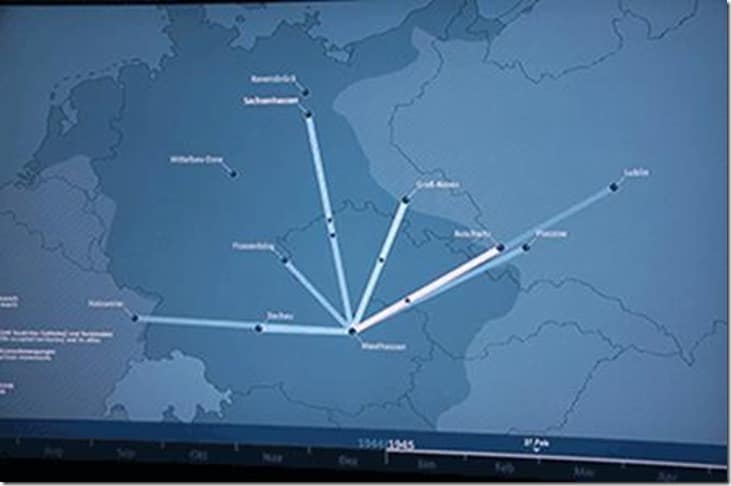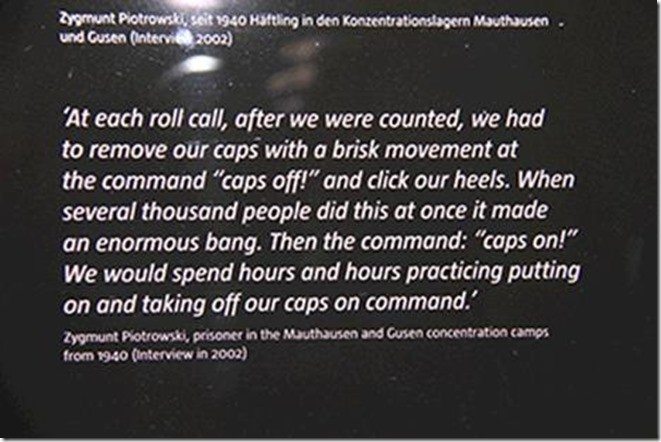The Dynamics of Dehumanisation
It is a very sobering experience to stand in a gas chamber and reflect on what happened there. I recently stood in the facility of Mathausen-Gusen (http://en.wikipedia.org/wiki/Mauthausen-Gusen_concentration_camp), one of the largest concentration camps in the Third Reich. Towards the end of WW2 as the allies closed in, all rail and roads led to Mathausen.
Similarly last year, I stood in the ‘killing fields’ in Cambodia and S21 (http://www.killingfieldsmuseum.com/s21-victims.html ), and considered how one can be conditioned to human detachment and dehumanization. For the purpose of this article key dynamics of dehumanization have been highlighted in bold.
An awareness of the dynamics of dehumanization helps us understand not only how people can commit atrocities but also what are the dynamics and indicators of dehumanization in general. It is not a big jump from dehumanizing others through prejudice, racism, narcissism and bullying in general to hearding people into a camps, incinerators and gas chambers (see below). The dynamics of dehumanization are simply amplified by context and social arrangements.
Those first to seek answers to the horrors of Mathausen-Gusen, Auschwitz, Dachau etc. were the social psychologists Adorno, Frenkel-Brunswick, Levinson and Sanford. Adorno et al. They and others (Zimbardo, Milgram etc) wanted to find out if the Nazis were monsters and how the Nazis could commit such acts. Adorno et al. famous work The Authoritarian Personality, is a must read. As I stood in the teeth sorting room in Mathausen (below) I contemplated Adorno’s research and also the research of Foucault.
The Authoritarian Personality can be freely downloaded here (http://www.ajcarchives.org/main.php?GroupingId=6490). Foucaults’ work on the clinic can be freely downloaded here (http://monoskop.org/images/9/92/Foucault_Michel_The_Birth_of_the_Clinic_1976.pdf).
Foucault noted that separation of body from personhood is critical to the process of dehumanization. This can be achieved by several means, even in how one ‘looks’ at another, what Foucault called the ‘medical gaze’. Zimbardo also used a range of techniques in the Stanford Experiments (https://www.youtube.com/watch?v=L_LKzEqlPto) such as reflective sunglasses so that eye contact is not made. De-personalisation is critical in the process of dehumanization. Understanding Hofstede’s Power-Distance factor in enculturation is important in this regard.
Physical and language differentiation is critical to the process of dehumanization, as is the de-naming of people. In Mathuasen this was done by taking away peoples names, giving them a badge, uniform and making them a number. In Auschwitz and other places they also tattooed their number on their tongue. Once one is made a number they can be objectified, be made an object.
The priority in Mathausen was to make everything calculative, they made excessive bureaucracy an art form and this preoccupation enabled efficiency as a dynamic for distancing people as objects. Calculative thinking is a methodology for distancing and objectifying others. The documentation and records in Mathausen are an astounding testimony to calculative thinking.
Detachment of groups and collectives made by semiotics and symbols of detachment is critical in the dehumanization process eg. ‘rag heads’, ‘cue jumpers’ or ‘blacks’. One thing the Nazis knew more than anything else was that words and symbols matter. The Nazis were really the first in modern times to really understand and harness the power of semiotics in culture change (https://www.youtube.com/watch?v=6WrJMko344w ). Individually this can be done by calling people ‘trouble makers’, ‘patient’ and ‘rule breaker’. One thing one gets from a study of social psychology is that words matter, semiotics matter. Words, language and signs have a profound ‘framing’, ‘priming’ and ‘anchoring’ effect and this is why the way we speak about goals (eg. Zero) carries its own psychology. The Nazis knew about the psychology of goals and the necessity of consistency between the language and practice of goal setting.
In safety I know some companies that will not allow the use of a person’s name in reporting injury. It is well documented how the occupation, rehabilitation and insurance industries dehumanize people in this way. What is your claimant number please?
Military language and processes also enable the dehumanisation of others. This enables the speaking of others as ‘the enemy’ and those we can ‘attack’. We can then speak of defending something at the expense of others and as ‘others’ as the enemy of an idea. Military metaphors and language enable the speaking of evil practiced in the name of good. I wonder who the enemies of zero are? When we speak of safety as ‘lean green safety machines’ (http://www.safetydifferently.com/lean-green-safety-machine-part-1/) who and what is the enemy? Why do we need military metaphors and semiotics in safety? Who are we fighting?
Another dynamic in the process of dehumanization is the use of symbols of power and discipline, in Mathausen this was the use of the cap. Misuse of the cap enabled the utmost cruelty and became a visible symbol of psychological disobedience. Pedantic attention to dress and superficial signification is also critical in the process of dehumanization.
Another dynamic of dehumanization is the power of scrutiny, particularly surveillance ensuring all are under the gaze of the panoptican. The power of the panoptican is undertaken through assembly and behavioural observation, usually through some form of parade and enactment of power (see the Mathausen assembly area below.
The panoptican is used to determine the nature of in-group and out-groupness and on this basis discrimination and prejudice. Once people are differentiated as objects then the demand for absolutes can be applied and discipline metered out accordingly. This authority is only administered in one direction and there is no reciprocal determination.
One of the books we study intensely in the Post Graduate Program in the Social Psychology of Risk is Abelson, Frey and Gregg’s three volume series Experiments With People. Abelson’s book documents social psychology research over the past 50 years with much of the foundational work being undertaken in response to the dehumanization by the Nazis.
When we understand the dynamics of dehumanization through social psychology we should then be more responsive and sensitive to such dynamics wherever they are exhibited, including dehumanization in the name and good of risk and safety.











Do you have any thoughts? Please share them below